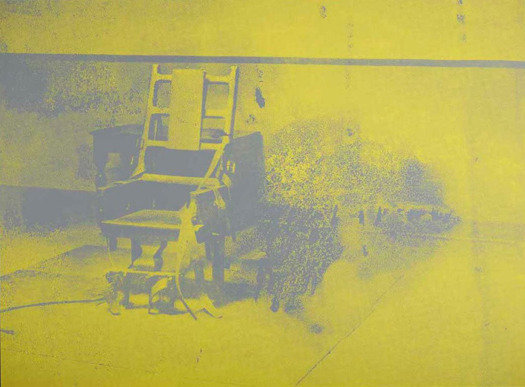Three exhibitions
dal 26/6/2014 al 27/9/2014
Segnalato da
26/6/2014
Three exhibitions
Museum Folkwang, Essen
'From Warhol to Richter. In between photography and printmaking' presents around 80 such samples. 'Think Big. Poster ideas for billboards' features posters from museum's collection, each from a special angle. Divided into three sections featuring around 50 works, 'End of an Era' reflects photographic methods and aesthetics that will disappear with the digital turn of the medium.

From Warhol to Richter
In between photography and printmaking
The 1960s saw a media revolution in prints. For the first time prints were made with themes essentially taken from photographs. In being transferred to prints, the photos were altered and re-interpreted, but the observer can always recognize that the theme comes from a photograph.
The exhibition presents around 80 such samples, including such famous works as the series Electric Chairs and Marilyn Monroe by Andy Warhol from the years 1964 and 1971, making this the first time a comprehensive selection of photo-based prints dating from the 1960s and 1970s from the Museum Folkwang Prints Collection has been put on display.
Works by Roy Lichtenstein include the rarely shown series Ten Landscapes. Prints by Gerhard Richter from the period 1968 to 1972 are likewise on display. In dialogue with works by Robert Rauschenberg, James Rosenquist, Mel Ramos or Wolf Vostell, the exhibition offers a representative overview of the photo-based prints of this era that are richly facetted in both style and content.
---
Think Big
Poster ideas for billboards
Intermedio: In irregular intervals, Museum Folkwang will present posters from its collection, each from a special angle. Above all posters that owing to their position in the range of our collections tend rarely to put in an appearance in public exhibitions but nevertheless shed interesting light on certain aspects of developments in posters. Intermedio focuses on the visual experience. The first show features prints in a 1:1 format (2.36 x 3.36 m) for billboards, primarily from the 1980s. Some of these presentation ideas formed the basis for successful ad campaigns.
The show starts with the poster campaign developed for Pfanni potato cakes in 1975. The images of potato cakes were emblazoned on posters almost two metres high, and with headlines such as Das jüngste Gericht (The Last Judgement) or Keine Reiberei (No friction). They were a huge success – both for Pfanni and for the poster as a medium. Whereas in 1972 some 30 products and services were promoted on such billboards, in 1978 the number had already topped 150. The exhibition will show some 30 posters.
---
End of an Era
Artistic Practices and Techniques of Analogue Photography
Divided into three sections featuring around 50 works, the exhibition reflects photographic methods and aesthetics that will disappear with the digital turn of the medium.
The exhibition starts with the loss of the negative: In the past, the first result of his creativity the photographer held in his hand was the photographic negative. It especially explores the difference in the material quality of print and plate.
Yet the focus is on providing a wide range of works depicting experimental techniques between pressing the shutter release and working in the darkroom. Various conceptual and artistic approaches are presented in the photographic experiments, some exploring formal aesthetics, some playful, others exploring borders. They provide a sense of the “alchemical dimension” of photography and include photograms, chemograms, solarisations, multiple exposures, or copy montages.
Something contemporary artists exploited in a wide variety of ways until very recently was their playful approach to accidents in photography, where overexposure, blurring or faults altered the end result. The final section of the exhibition is devoted to such unintended ‘accidents’.
The show features works from the collection, beginning in the 19th century with Eduard Baldus and continuing with Helmar Lerski, Oscar Nerlinger, Jeanne Mandello or Hans Finsler in the 1920s/1930s. Positions from the 1950s/1960s are illustrated by Otto Steinert, Rolf Winquist, as well as William Klein, Johannes Brus, Astrid Klein and Paul Graham
Image: Andy Warhol, Electric Chair, 1971. Out of the eponymous series of ten silkscreens © 2014 The Andy Warhol Foundation for the Visual Arts, Inc. / Artists Rights Society (ARS), New York © Photo: Museum Folkwang
Head of Communications and marketing: Anka Grosser
T +49 201 8845 103
F +49 201 8891 45000
anka.grosser@museum-folkwang.essen.de
Press officer: Anna Littmann
T +49 201 8845 160
F +49 201 8891 45000
anna.littmann@museum-folkwang.essen.de
presse@museum-folkwang.essen.de
Museum Folkwang
Museumsplatz 1 - 45128 Essen
Regular opening times
Tue to Sun 10 a.m. to 6 p.m.
Fri 10 a.m. to 10 p.m.
Mon closed



